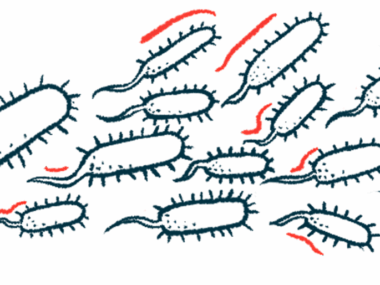Review of 2 Diets That May Benefit MS Patients: A Nutritionist’s View
Written by |

I recently came across the article “Review of Two Popular Eating Plans within the Multiple Sclerosis Community: Low Saturated Fat and Modified Paleolithic,” published in the journal Nutrients, which compared the efficacy of the Swank diet and the modified paleolithic Wahls Elimination (WE) diet in influencing the prognosis of multiple sclerosis (MS). I found the comparisons interesting in relation to how consciousness has evolved around the connection among diet, immunity, gut health, and neurodegenerative conditions.
The first insight I had was that the Swank diet is more broad-scale and old school. It was developed 70 years ago and therefore reflects the ideology of the time period. It prioritizes calorie deficit and lower fat intake over nutrient diversity in regards to increasing health and limiting risk for disease.
Its guidelines are consistent with the U.S. Dietary Guidelines for Americans, including all food groups in the plan. Its significant intervention for MS focuses on macronutrient and energy regulation, specifically reducing saturated fat and calories to reduce the progression of MS based on the theory that an increased body mass index, high cholesterol, and triglycerides from saturated fats affect the brain and its functionality.
The WE diet doesn’t disagree with the Swank diet, but rather expounds on its principles with a little more refinement. This diet focuses less on reducing saturated fat and calories and concentrates more heavily on how specific micronutrients and foods’ individualized composition breakdown affect the gut microbiome, absorption of nutrients, and subsequent impact on inflammation, immunity, and neurological health.
In the WE diet, complete food groups are eliminated, and there are specific guidelines for fruits and vegetables due to their phytonutrient properties and effect on reducing oxidative stress. Nine servings of fruits and vegetables are recommended, divided among leafy, sulfur-rich, and deeply colored varieties. Consumption of seaweed algae and nutritional yeast is also encouraged. Gluten-free grains and legumes are allowed in very limited quantities, and eggs, which have been shown to increase inflammation, are eliminated from the diet.
Both diets agree that reducing inflammation and metabolic syndrome is important, but Swank’s diet theory of reducing saturated fat as a means of increasing vascular integrity does not take into consideration the positive impact certain saturated fats such as coconut oil and ghee can have on the microbiome when combined with fiber-rich fruits and vegetables. The addition of fats in the WE diet also balances out the calorie deficit from the reduction of grains and other carb sources including dairy.
The WE diet specifically recommends saturated fatty acids for high-heat cooking, as unsaturated fats at high temperatures can cause free radicals, leading to inflammation and potential mutation of the cell DNA, which can contribute to a decrease in neurological health and immunity on the whole.
The WE diet emphasizes the importance of essential fatty acids and recommends an omega-3:omega-6 ratio of 4:1. This means that unsaturated fat oils that are allowed on the Swank diet such as vegetable oils including canola, corn, and soybean are not allowed on the WE diet, as it would throw off this ratio. Vegetable oils are very high in omega-6 fatty acids. Omega-3 fatty acids are found in sources such as fish, flax, hemp, and chia.
According to WE, a favorable omega fatty acid ratio modulates neuronal membrane fluidity, neurotransmitter manufacturing, and central nervous system inflammation and does more good than harm. Both Swank and WE prohibit trans-fats from sources such as margarine, deep-fried foods, and processed foods.
Organ meats also raise a debate between the two diets and highlight the main themes mentioned above. Swank does not allow organ meat due to the high saturated fat content, but WE encourages eating these meats as they are an excellent source of important micronutrients that affect the enzymes and neurotransmitters associated with neuronal and neurological integrity.
In my opinion, the Swank diet approach for treatment is based around the hypothesis that outside diet conditions affect vascular health, ultimately leading to a dysfunction in the central nervous system, whereas the WE diet approaches MS as an autoimmune condition potentially triggered by causative factors rooted in the gut microbiome, lifestyle factors, and nutrient malabsorption. The theory is that reinfusing the body with essential nutrients can potentially reverse and reprogram the autonomic nervous system processes that influence the central nervous system.
As more research continues to be published on MS and the root of autoimmune disorders, nutrition will be more and more the focus of these conversations related to treatment and plan of care.
***
 Alana Kessler, MS, RD, CDN, E-RYT, is a registered dietitian, nutritionist, weight management expert, and an accredited member of the CDR (Commission on Dietetic Registration) and the American Dietetic Association. She is also a yoga and meditation teacher, Ayurveda specialist, and the founder of the New York City-based fully integrated mind, body, and spirit urban sanctuary, BE WELL. Alana’s BE WELL ARC System and Method Mapping technique is a holistic multi-disciplinary approach to health and wellness that blends Eastern and clinical Western diet and lifestyle support to effect long-lasting behavior change.
Alana Kessler, MS, RD, CDN, E-RYT, is a registered dietitian, nutritionist, weight management expert, and an accredited member of the CDR (Commission on Dietetic Registration) and the American Dietetic Association. She is also a yoga and meditation teacher, Ayurveda specialist, and the founder of the New York City-based fully integrated mind, body, and spirit urban sanctuary, BE WELL. Alana’s BE WELL ARC System and Method Mapping technique is a holistic multi-disciplinary approach to health and wellness that blends Eastern and clinical Western diet and lifestyle support to effect long-lasting behavior change.
A graduate of NYU with a BA and MS in clinical nutrition, Alana is dedicated to helping others learn how to nourish themselves, create balance, and understand their true nature through nutrition, yoga, and inner wellness. She leads Yin Yoga workshops and trainings as well as wellness retreats at international locations. Her health, fitness, and lifestyle expertise has been featured in Aaptiv.com, Droz.com, EatThis.com, RD.com, Redbook, WomensHealthmag.com, and Vogue. For more information, visit her website at bewellbyak.com.





